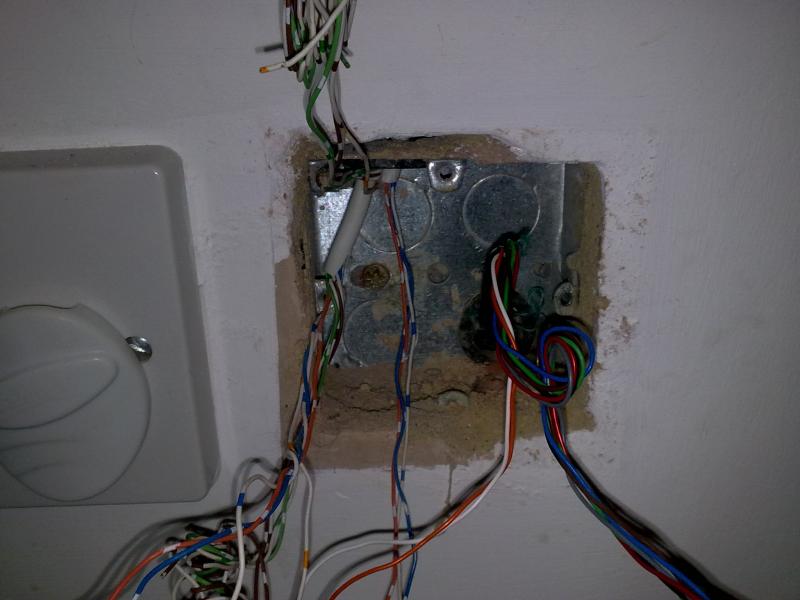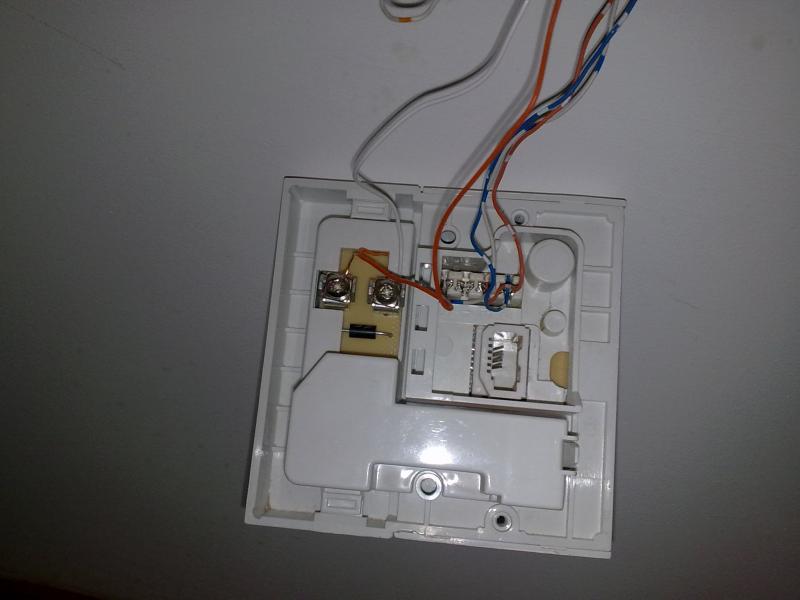I have a customer who owns two adjacent holiday cottages, each with their own distinct phone number. They have a BT master socket in each. BT provided a single 8 core cable to one of the cottages and ran a seperate cable between the incoming master socket and the master in the other cottage. The incoming master socket is connected to two wires, one orange and one white and six wires are unused. This cottage works just fine.
The second cottage used to work but the owner says that BT, for reasons unknown, disconnected it while installing ADSL in the first cottage. Now the cable running from the incoming master socket to the second cottage's master socket is not connected to anything at all. The owner has had BT out to have a look to see what's wrong. BT said all their cabling was fine, charged £120, and left the customer in exactly the same position as before. Customer not happy.
I've tested voltages across all combinations of the incoming wires and only the orange and white have a voltage (49v DC). All the others appear to be dead. I've also tested voltage across the orange and white when the incoming cottage number is called, it remains at 49vdc and the telephone rings normally. When the second cottage number is dialled the orange and white start fluctuating from 49vdc to a whole range of voltages, both DC and AC.
So from this I deduce, perhaps incorrectly, that both telephone numbers are served by the single pair of orange and white. Is this correct? If it is correct, where and which colours should I attach to this incoming master socket to spur off to the second master socket?
This is a picture of the incoming master socket. The bottom right cable is the incoming BT cable. You can see the orange and white wires running to the faceplate. The blue/white, white/blue, and orange/white wires runing up to the right-hand cable at the top of the box are to an extension in this cottage. The left hand cable is the run to the second cottage's master socket. None of these are connected to anything in this box.
This is a picture of the faceplate of the incoming master socket.
Any help would be most welcome.
The second cottage used to work but the owner says that BT, for reasons unknown, disconnected it while installing ADSL in the first cottage. Now the cable running from the incoming master socket to the second cottage's master socket is not connected to anything at all. The owner has had BT out to have a look to see what's wrong. BT said all their cabling was fine, charged £120, and left the customer in exactly the same position as before. Customer not happy.
I've tested voltages across all combinations of the incoming wires and only the orange and white have a voltage (49v DC). All the others appear to be dead. I've also tested voltage across the orange and white when the incoming cottage number is called, it remains at 49vdc and the telephone rings normally. When the second cottage number is dialled the orange and white start fluctuating from 49vdc to a whole range of voltages, both DC and AC.
So from this I deduce, perhaps incorrectly, that both telephone numbers are served by the single pair of orange and white. Is this correct? If it is correct, where and which colours should I attach to this incoming master socket to spur off to the second master socket?
This is a picture of the incoming master socket. The bottom right cable is the incoming BT cable. You can see the orange and white wires running to the faceplate. The blue/white, white/blue, and orange/white wires runing up to the right-hand cable at the top of the box are to an extension in this cottage. The left hand cable is the run to the second cottage's master socket. None of these are connected to anything in this box.
This is a picture of the faceplate of the incoming master socket.
Any help would be most welcome.




